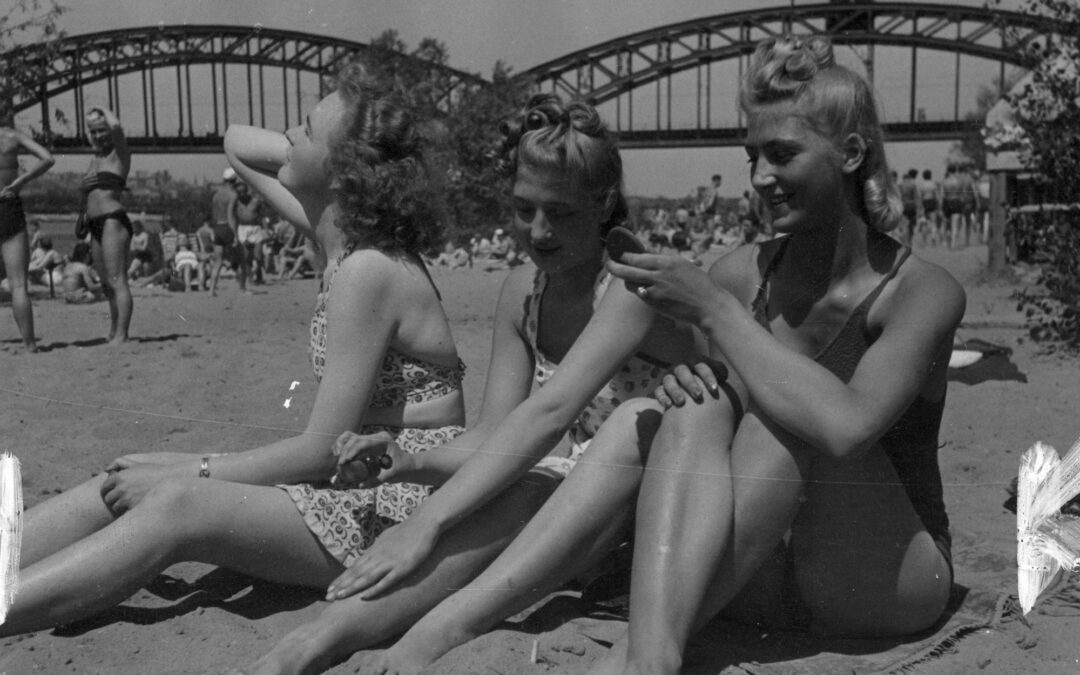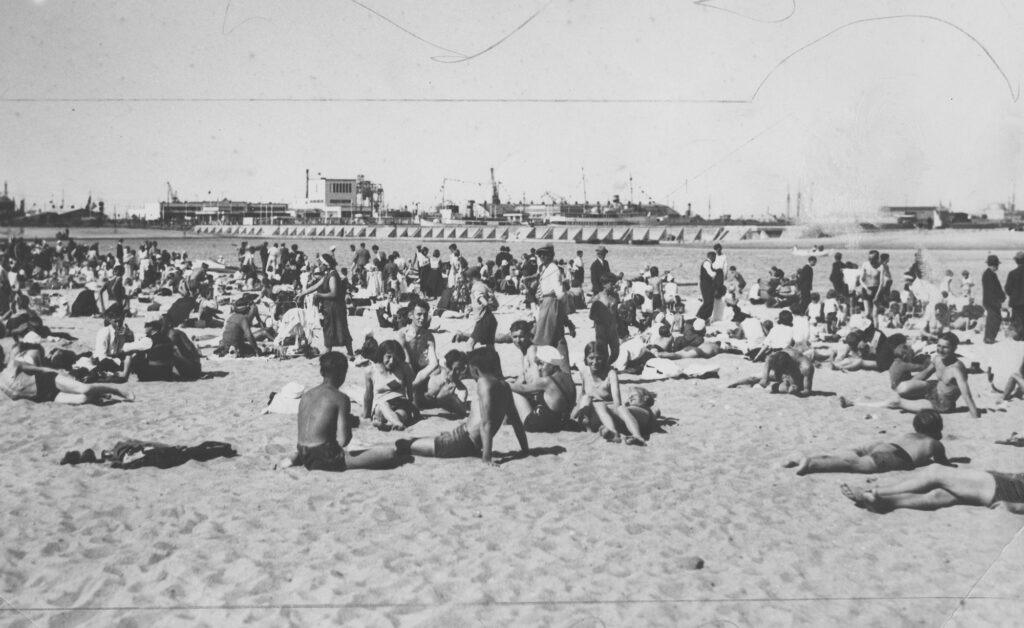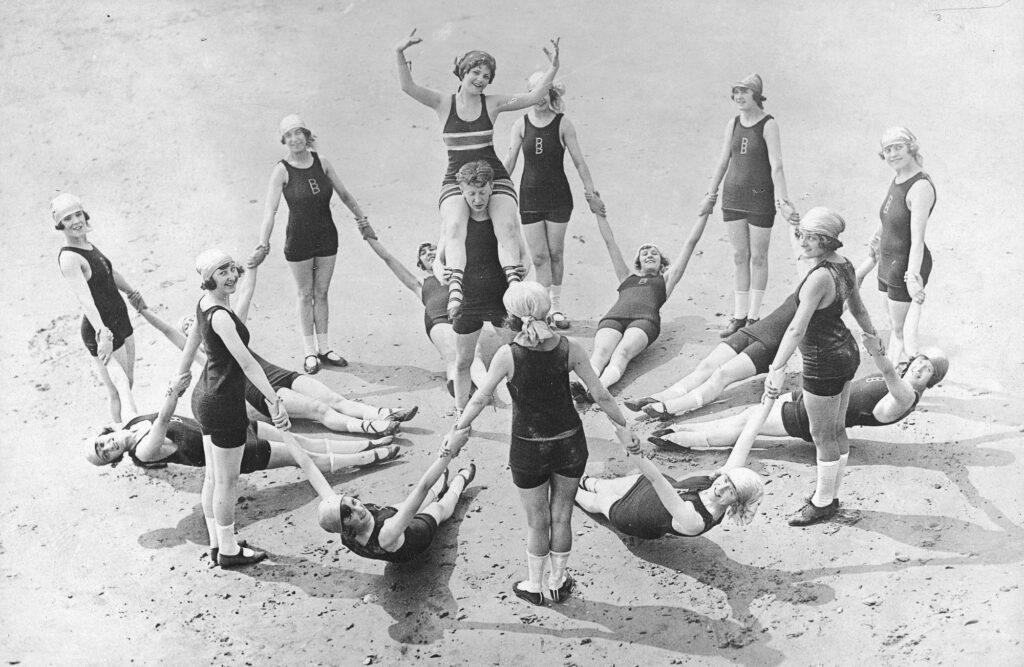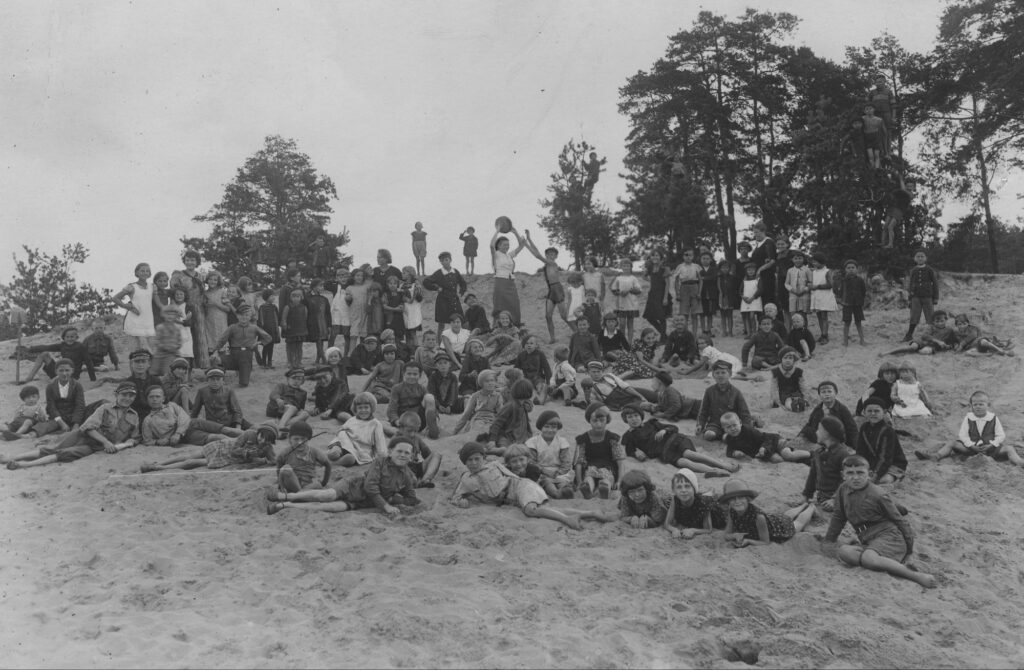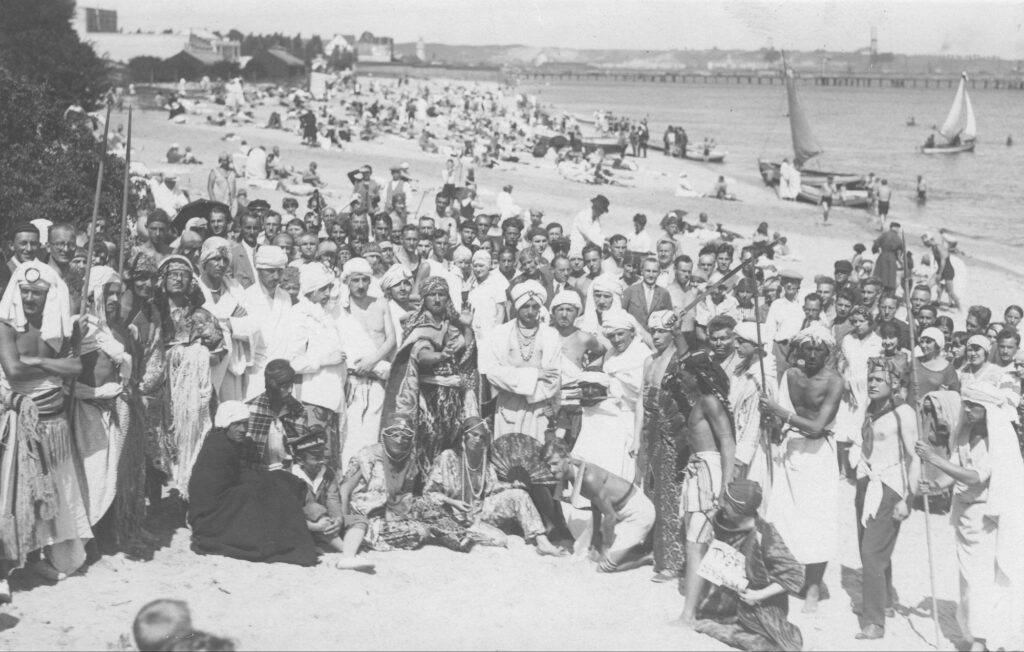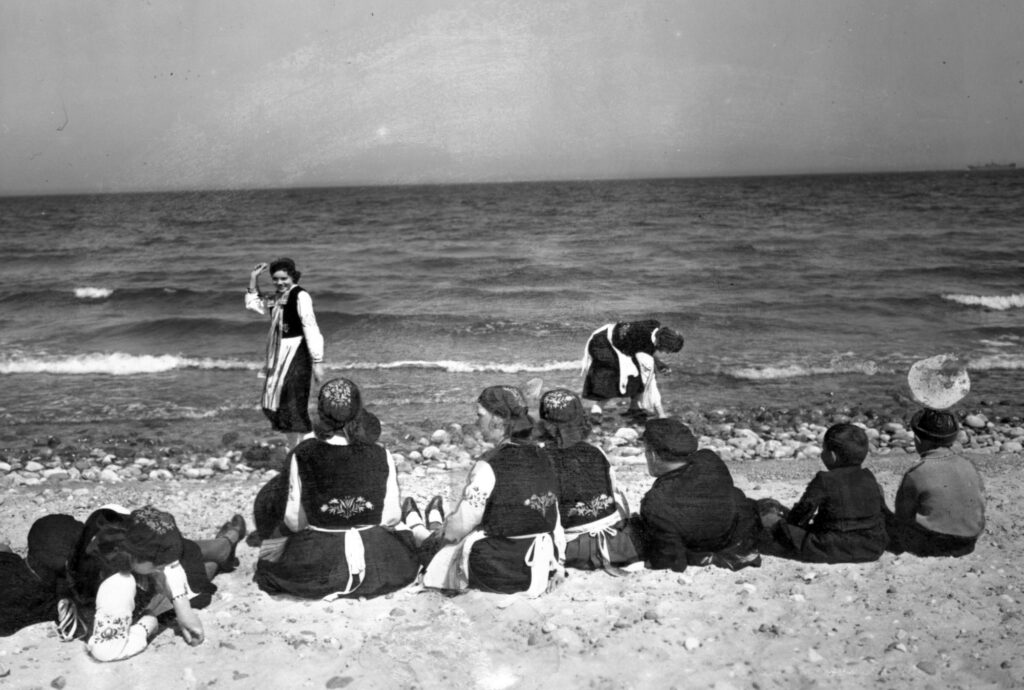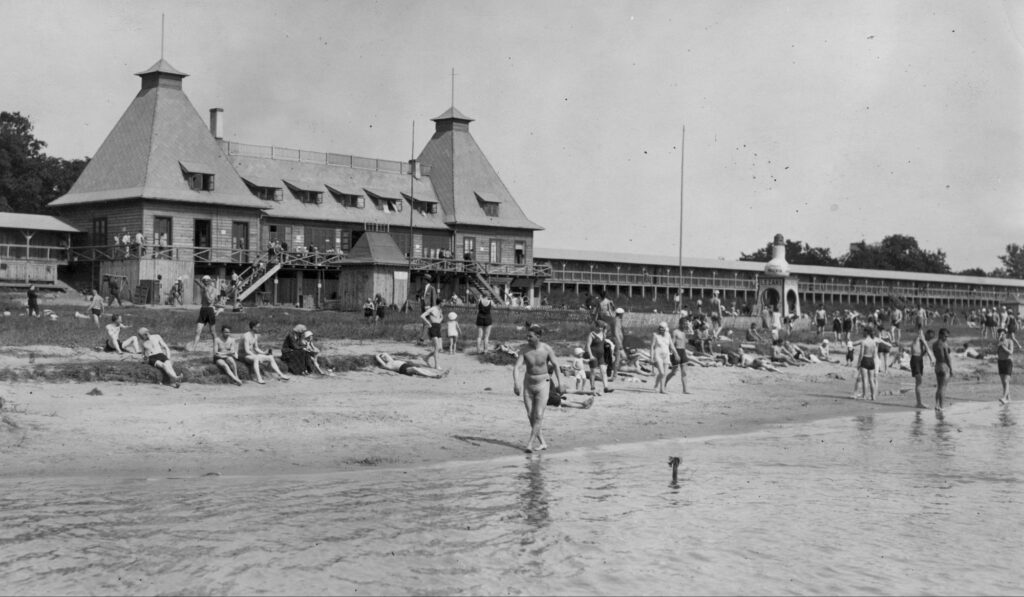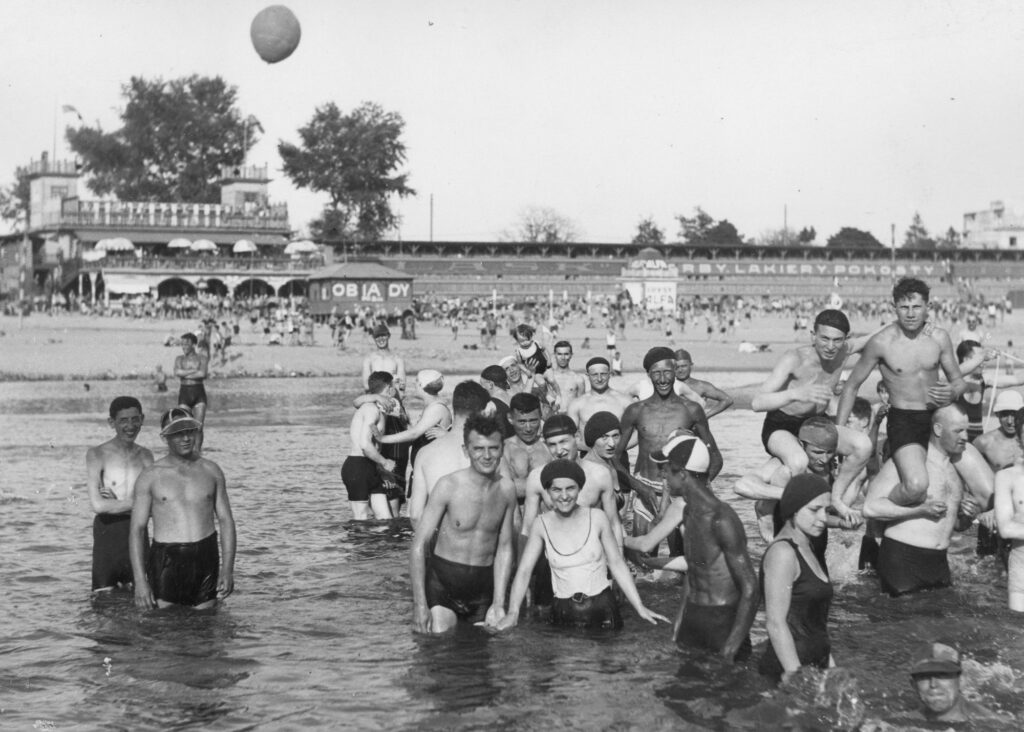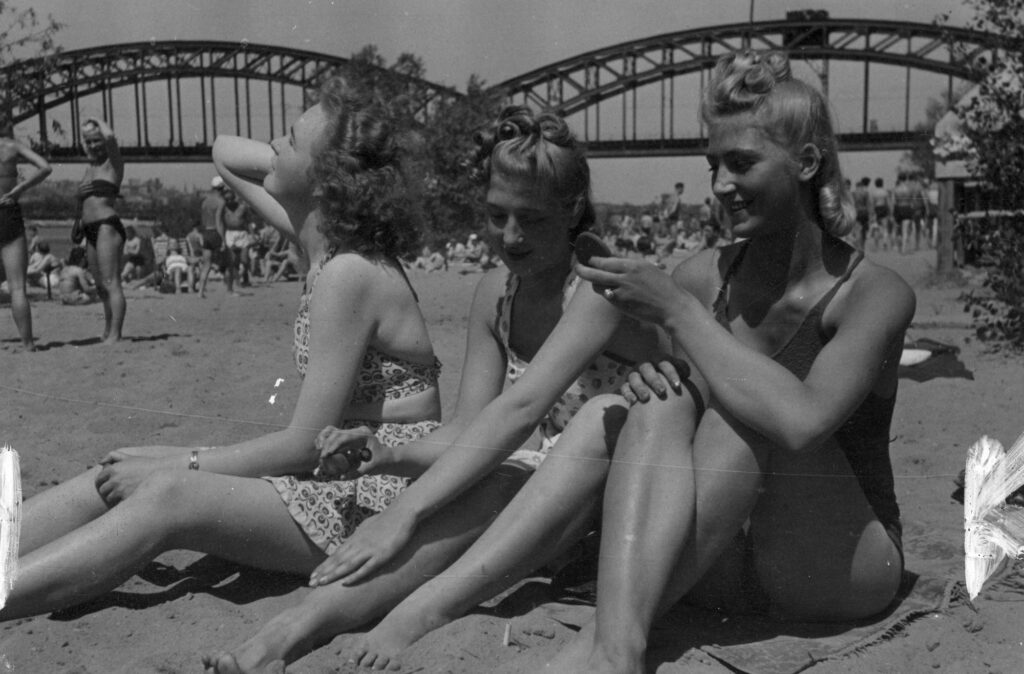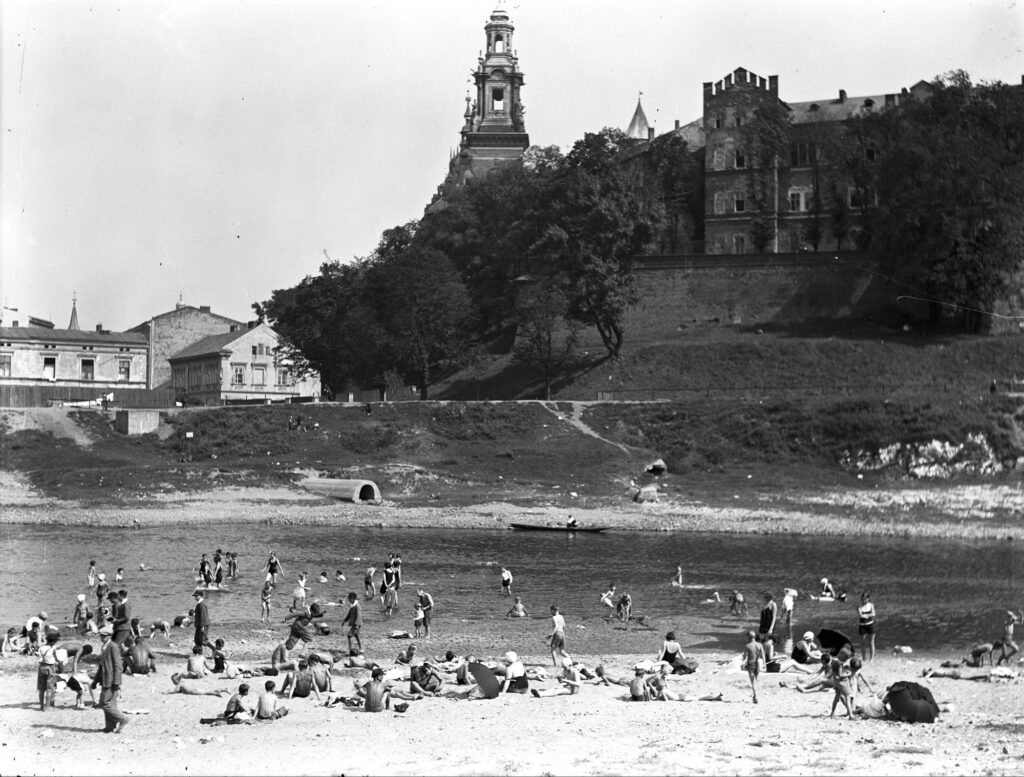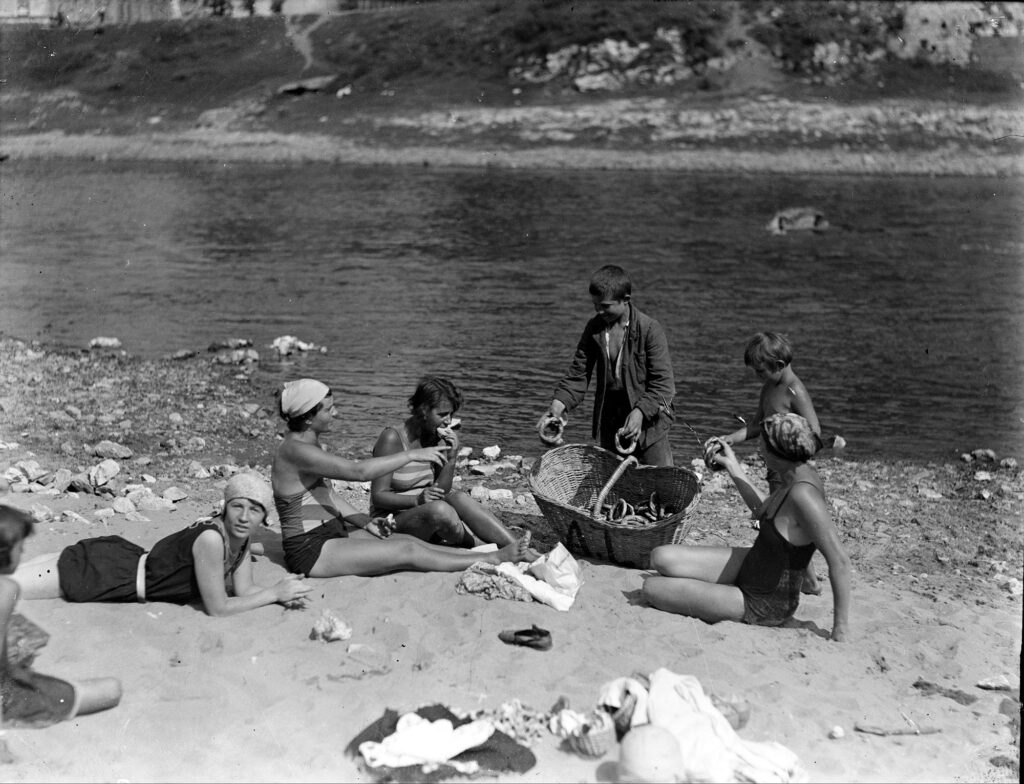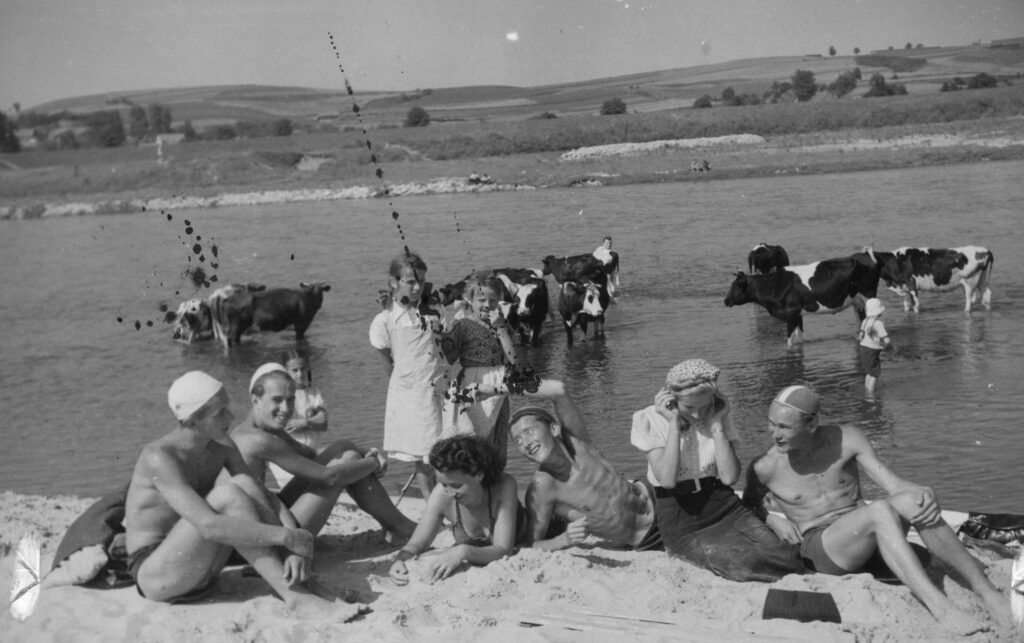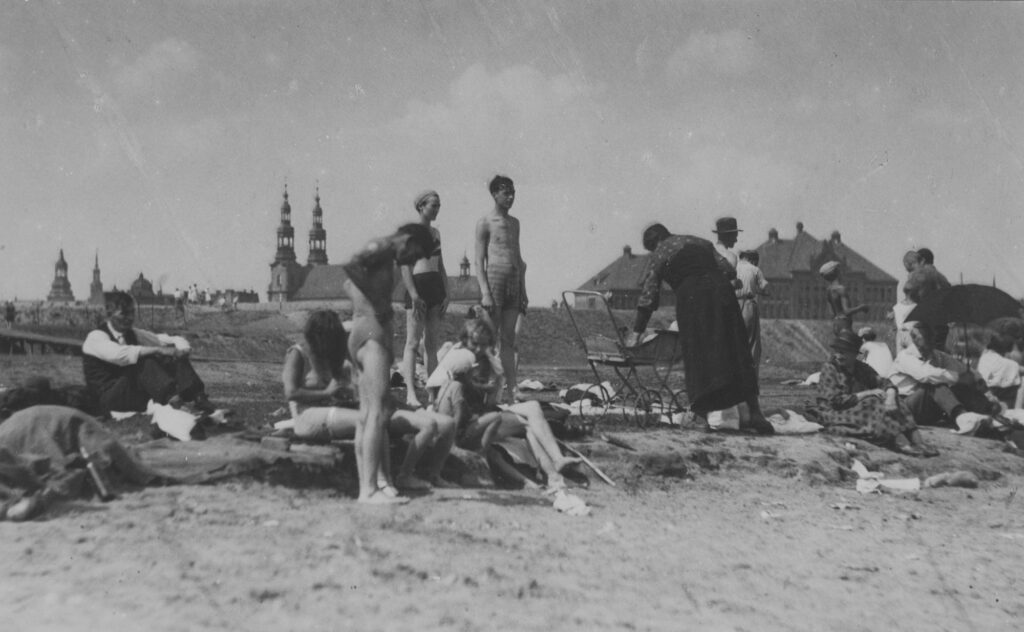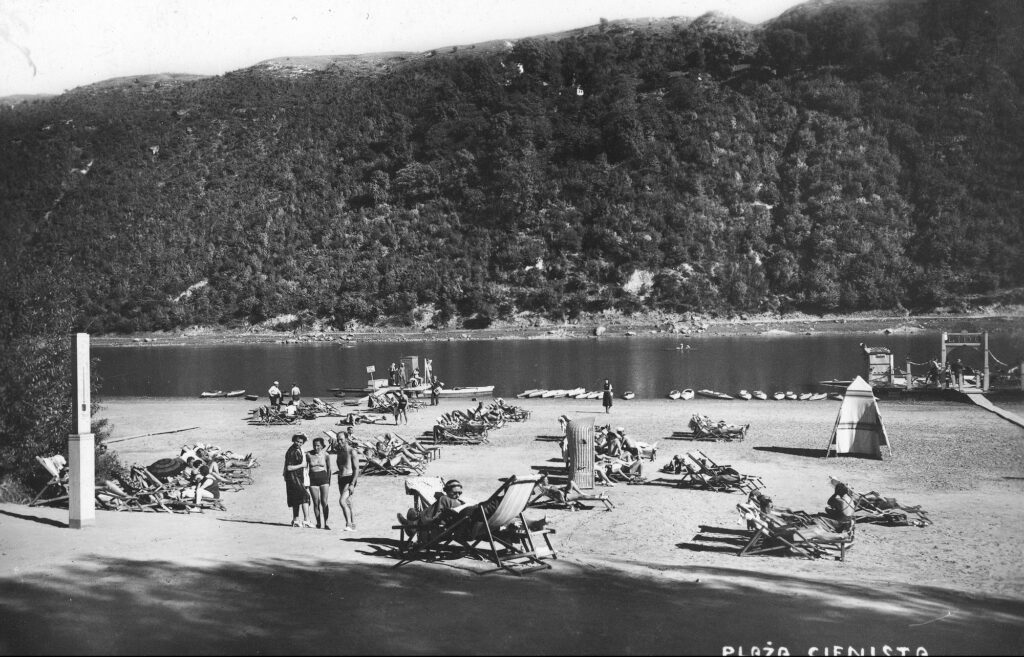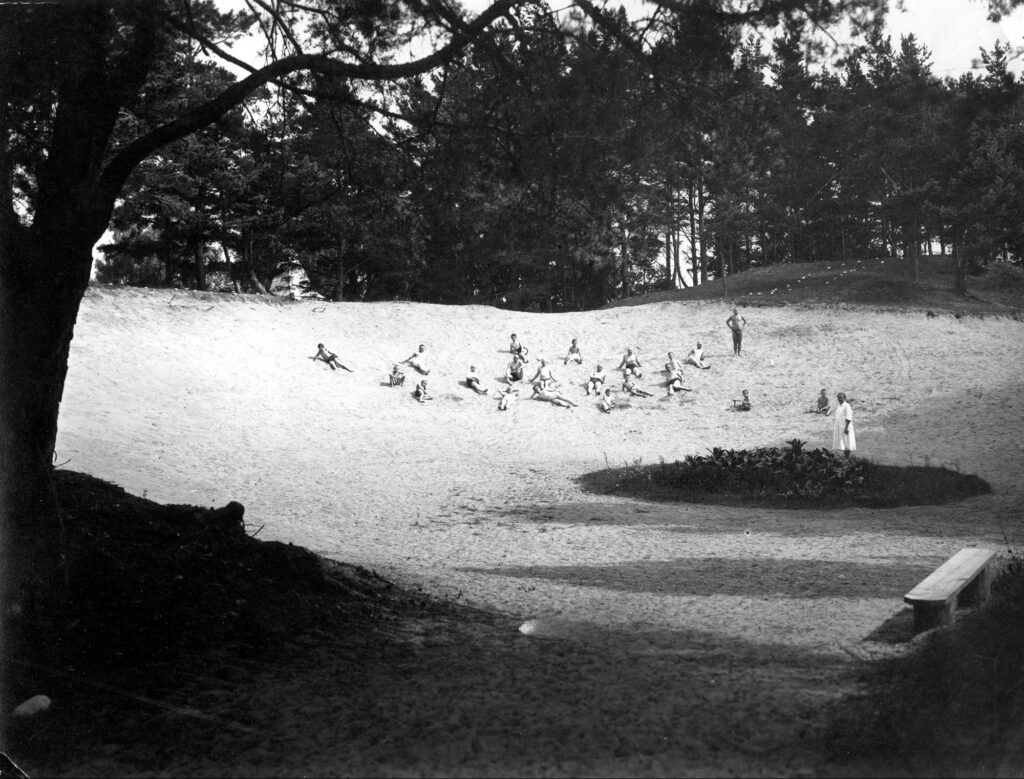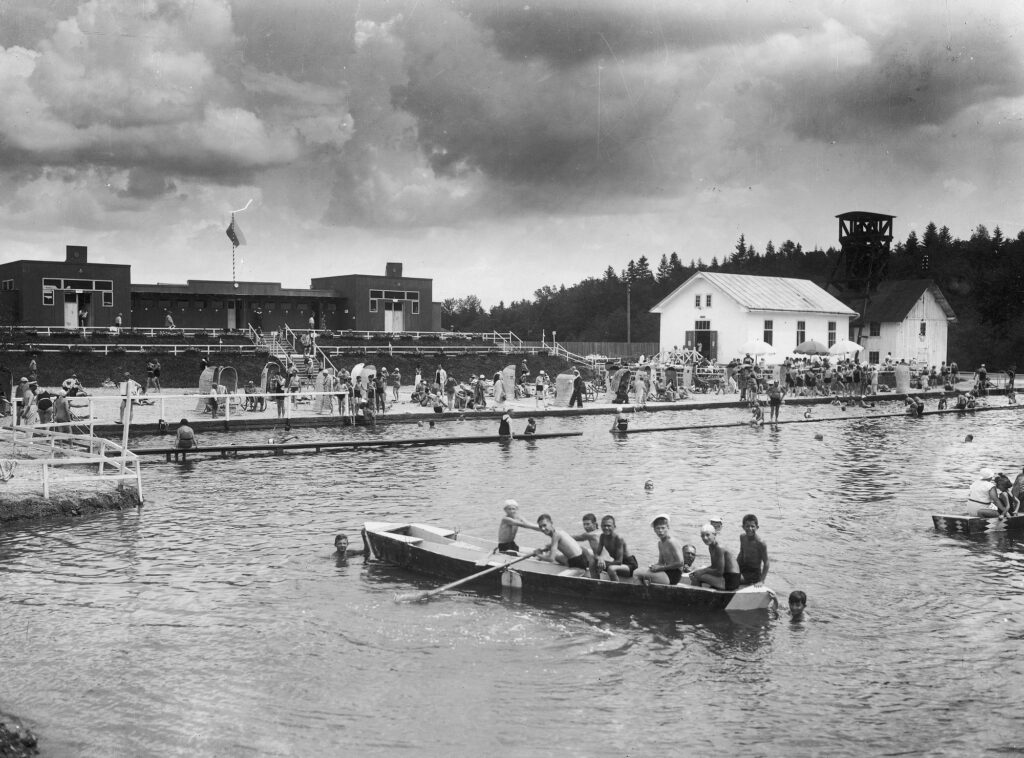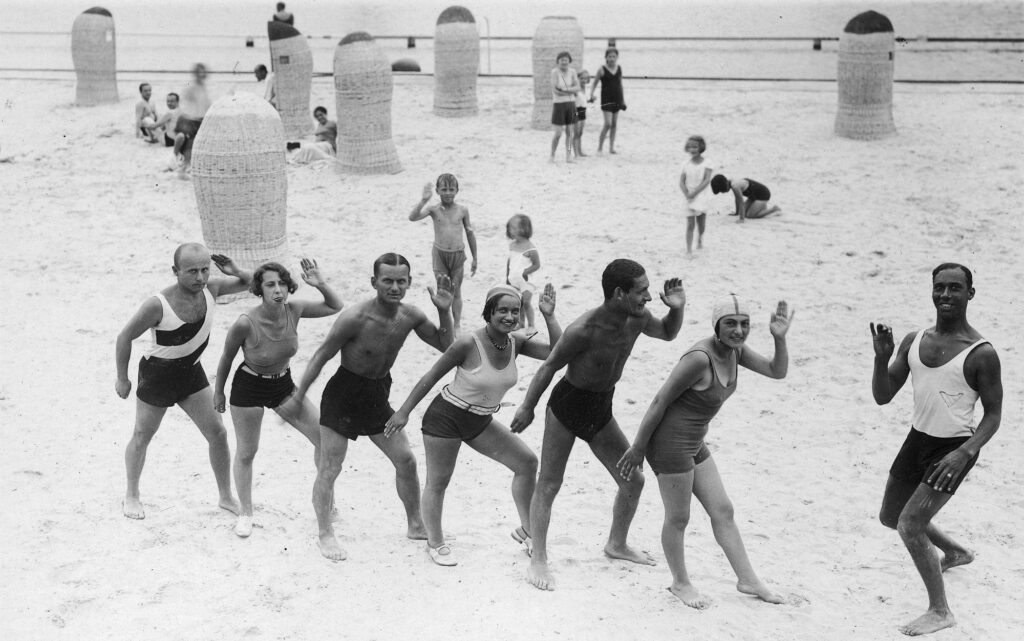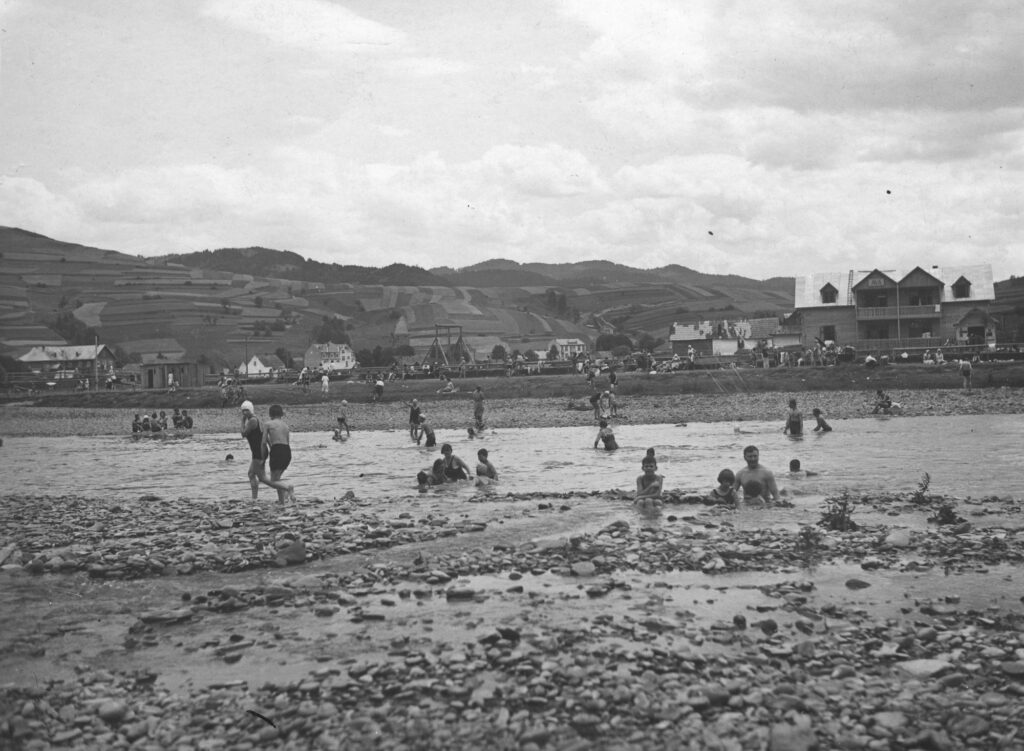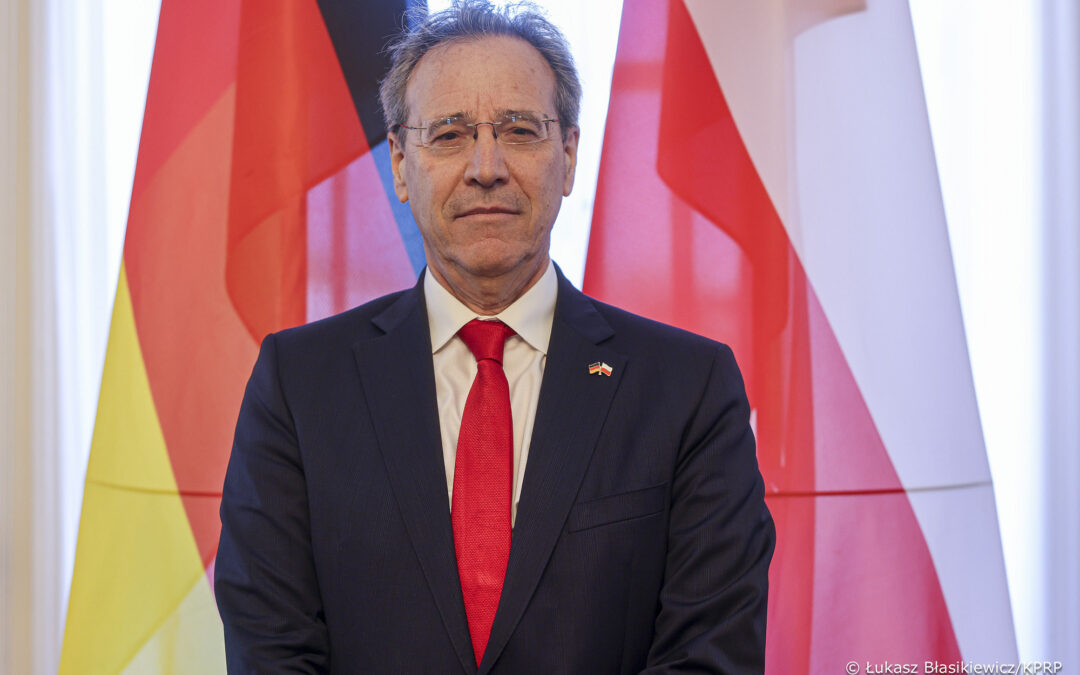By Ben Koschalka
Every summer, many Poles head north to holiday at the country’s hundreds of kilometres of sandy beaches. In July and August 2019, some 1.8 million people visited Baltic Sea resorts. A number of these began to grow in popularity a century ago, as newly independent Poland regained access to the sea.
But it was not just on the coast that bathers were enjoying new-found freedoms. City beaches also became a popular attraction in the interwar period, while many holidaymakers also visited inland spas and resorts, some of which now lie outside Poland following post-war border changes. We take a pictorial look at a few of the most popular holiday and leisure destinations of yesteryear.
The Baltic boom
Much of the growth in the popularity and prosperity of Poland’s Baltic coastline was centred around Gdynia, a village where a seaport began to be built in 1921. The development of passenger ships, building of a rail line between the Free City of Danzig (Gdańsk) and Puck, and modernisation of the Hel peninsula all helped to entice politicians and celebrities to the area.
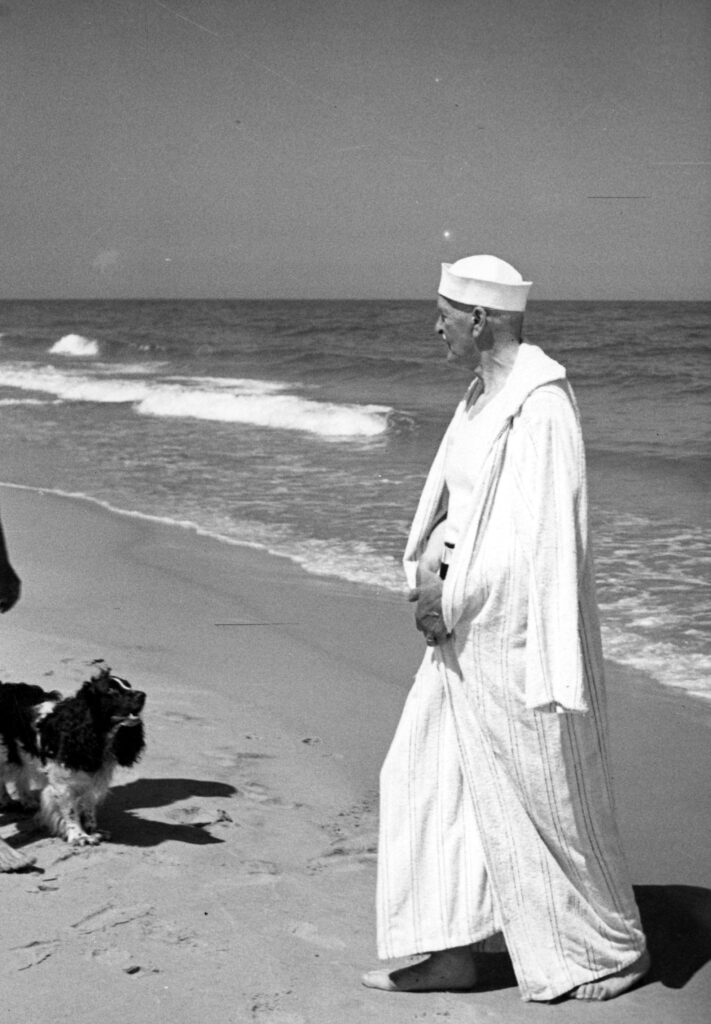
Ignacy Mościcki, the president of Poland between 1926 and 1939, in a dressing gown on the beach, 1937
Summer in the city
“The Warsaw beach has earned popularity,” read a report in Świat magazine from 1927, quoted on the website e-Kartka z Warszawy. “Just two seasons ago…it was thought unacceptable. Something else are beaches by the sea! Abroad! The beach in Warsaw was viewed as a comparatively decent sensation. Today opinions have changed radically. Even individuals from society, not excluding ladies, visit the Warsaw beach.”
The capital had two popular private beaches, both south of Poniatowski Bridge on its right bank. A private bus took bathers to the Kozłowski brothers’ beach, where they paid 50 groszy to enjoy the clean Vistula water and the facilities of the “largest and most cultural” beach, including a shooting range, hairdresser, and evening dances.
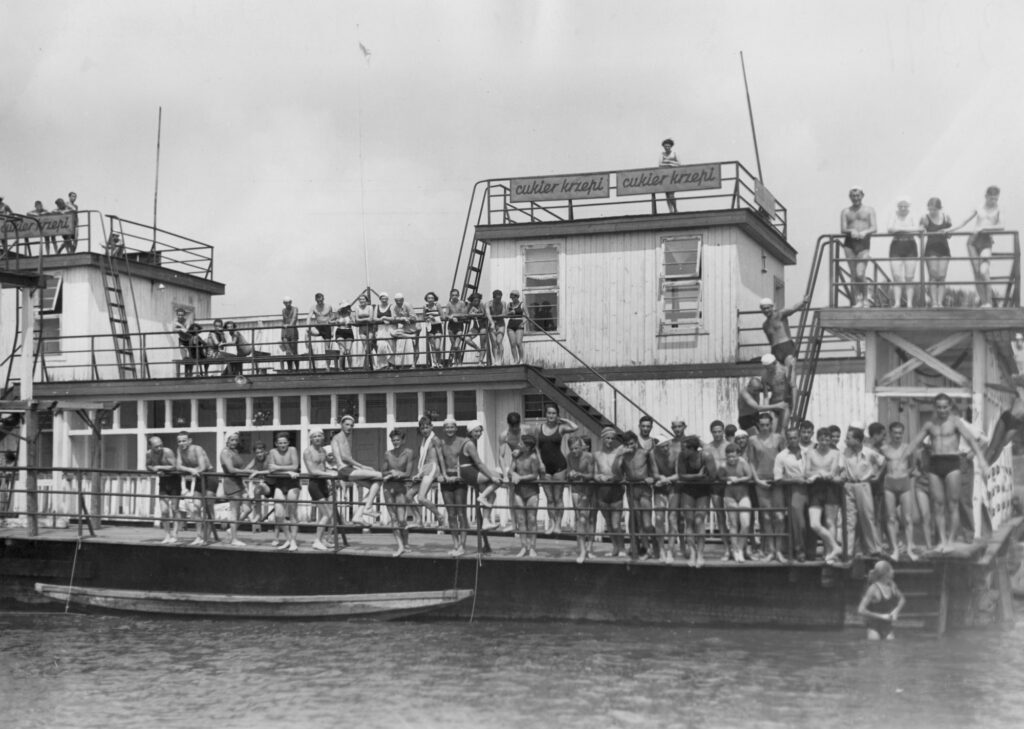
People on a barge (bearing the famous interwar advertising slogan “Cukier krzepi” – “Sugar fortifies”) at a Warsaw beach, 1930s.
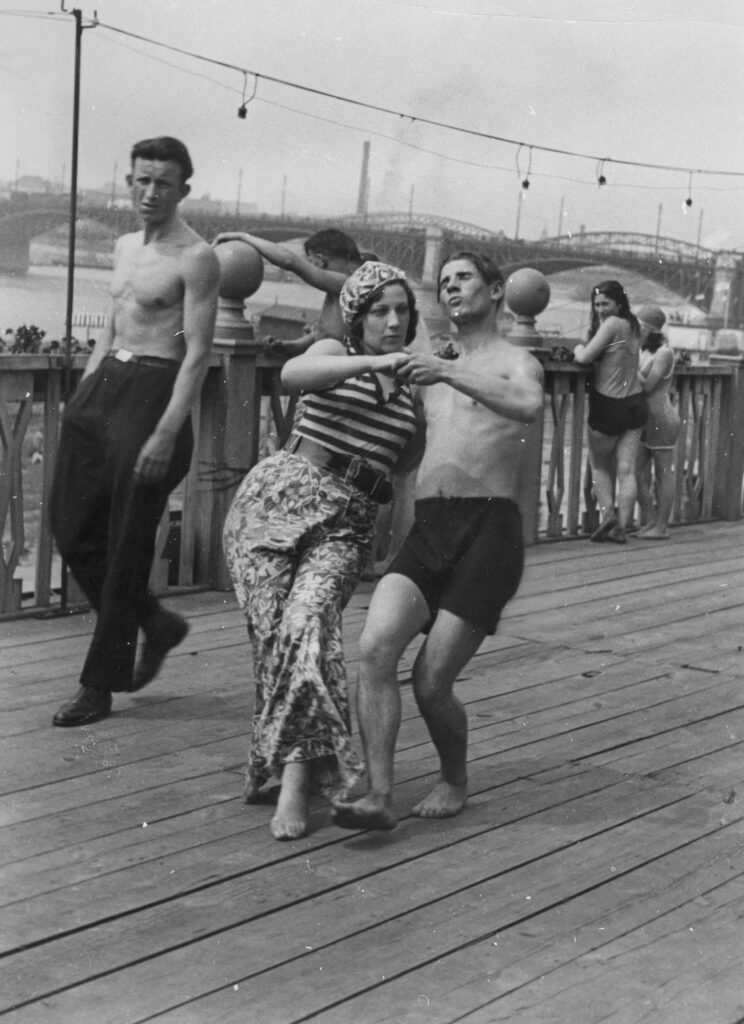
Couple dancing on the boardwalk at Poniatówka beach, Warsaw, 1930s. Poniatowski and Średnicowy bridges, both destroyed by retreating German troops in September 1944, are in the background.
Residents of other Polish cities were also spending hot summer days by the river. In Kraków, one popular beach lay on the bend in the Vistula, opposite Wawel Castle. The first commercial one, however, was founded in July 1930 by the Workers’ University Society, a socialist educational and cultural organisation, next to the Norbertine convent.
Poznań, which was restored to Poland in 1919, had several sandy city beaches on the Warta River. At the oldest, Bocianka, which had existed since the 18th century, separate days were allocated for men and women to bathe.
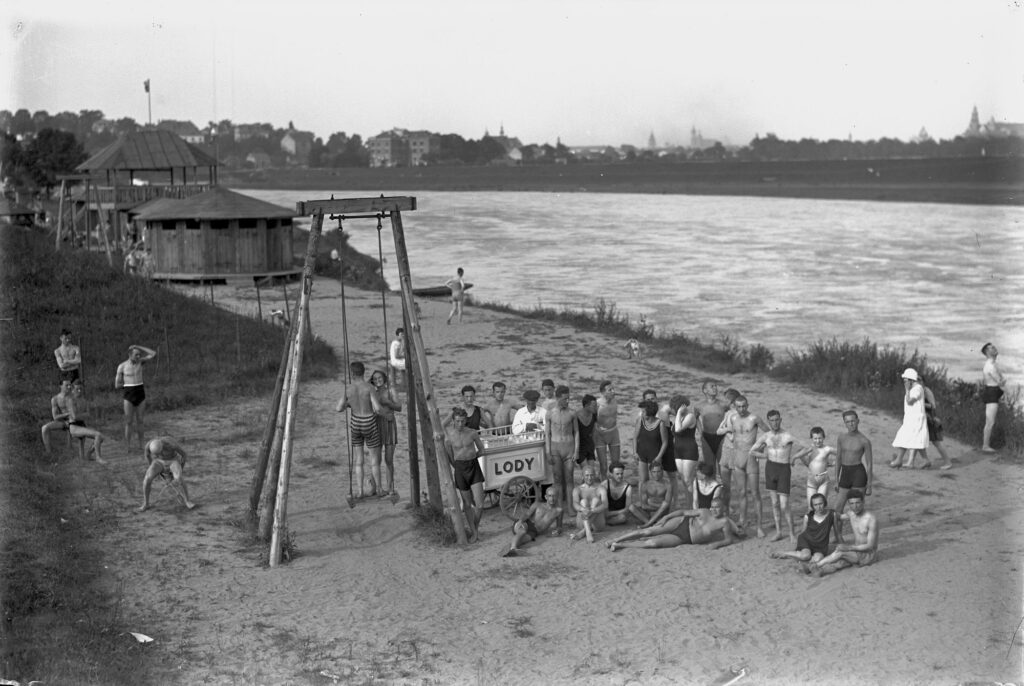
Bathers, a swing, and an ice-cream cart in Kraków, with St Mary’s Basilica and Wawel Castle visible on the horizon, 1926
Popular inland resorts
The town of Zalichshyky on the Dniester river, now in Ukraine, became a popular spa in the far southeastern corner of the Second Polish Republic, when it was known as the “Polish Riviera”. It was regarded as the warmest town in Poland, and hosted grape festivals every summer.
The resort benefited from its direct rail connection with Warsaw and Gdynia and a luxtorpeda fast train to the city of Ternopil (then Tarnopol). It boasted a “shady” beach on one side of the river – “mostly for those who want to sunbathe”, as As magazine put it, and a “sunny” one – “a paradise for swimmers and children” – on the other side.
Another popular holiday destination was Druskininkai on the Nemunas River, now in Lithuania, but then known as Druskieniki on the Niemen. Józef Piłsudski, the Chief of State and First Marshal of Poland, was a devotee who did much to promote the resort. It was largely purchased by a state-owned bank and a railway link built in 1934 brought more tourists in.
One of the most popular destinations for holidaymakers in Poland at the time, and the winner of three gold medals as its best spa resort, was Truskawiec (now Truskavets in Ukraine). Almost 300 hotels, villas and guest houses were built there in the 1920s and 1930s, and the cream of Polish society, including Piłsudski and other politicians and numerous actors, musicians and writers, all visited.
After the Soviet invasion in 1939, the spa became a sanatorium for Red Army soldiers, before falling into German hands between 1941 and 1944, and later mostly destroyed under Soviet rule after the war.
Other spa towns that would remain within the Polish borders after the war also flourished. The most popular, where people had begun to take the waters in earnest in the mid-19th century. After Poland regained its independence, buildings were reconstructed and new mineral baths built, and the number of tourists quadrupled in two decades.
All images: Szukajwarchiwach/public domain
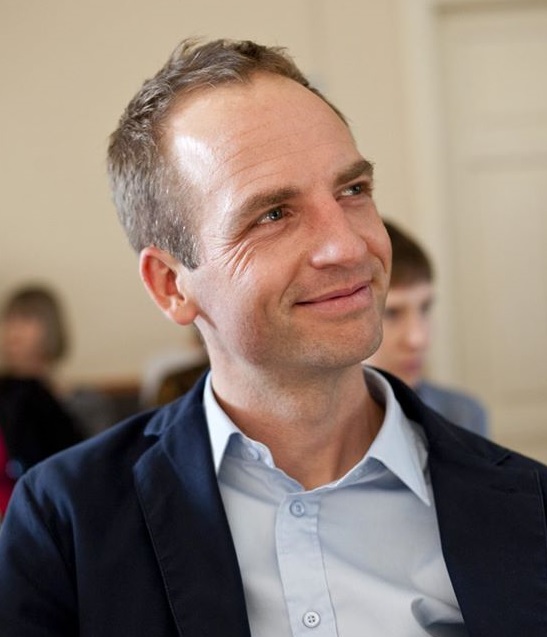
Ben Koschalka is a translator and senior editor at Notes from Poland. Originally from Britain, he has lived in Kraków since 2005.
